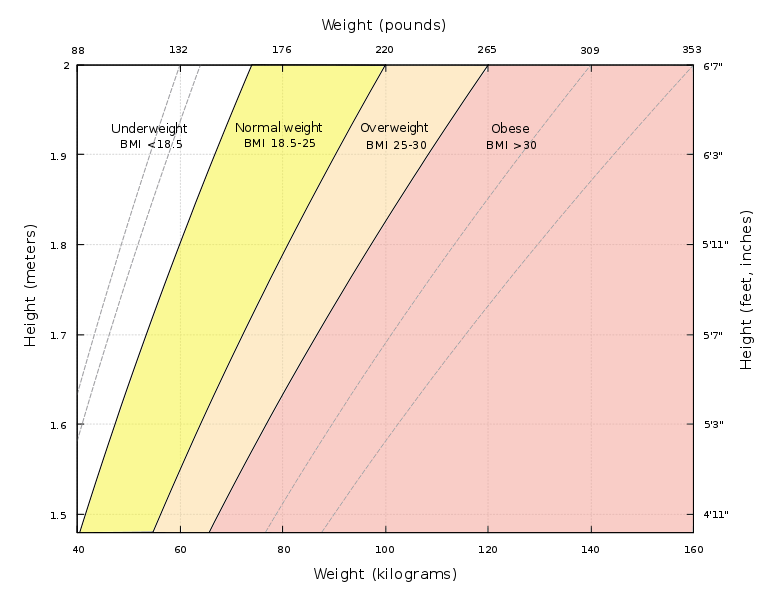| Medical diagnostics | |
 |
|
A graph of body mass index as a function of body mass and body height. The dashed lines represent subdivisions within a major class.
|
The body mass index (BMI) or Quetelet index is a value derived from the mass (weight) and height of an individual. The BMI is defined as the body mass divided by the square of the body height, and is universally expressed in units of kg/m2, resulting from mass in kilograms and height in metres.
The BMI may also be determined using a table[note 1] or chart which displays BMI as a function of mass and height using contour lines or colours for different BMI categories, and which may use other units of measurement (converted to metric units for the calculation).[note 2]
The BMI is an attempt to quantify the amount of tissue mass (muscle, fat, and bone) in an individual, and then categorise that person as underweight, normal weight, overweight, or obese based on that value. However, there is some debate about where on the BMI scale the dividing lines between categories should be placed.

